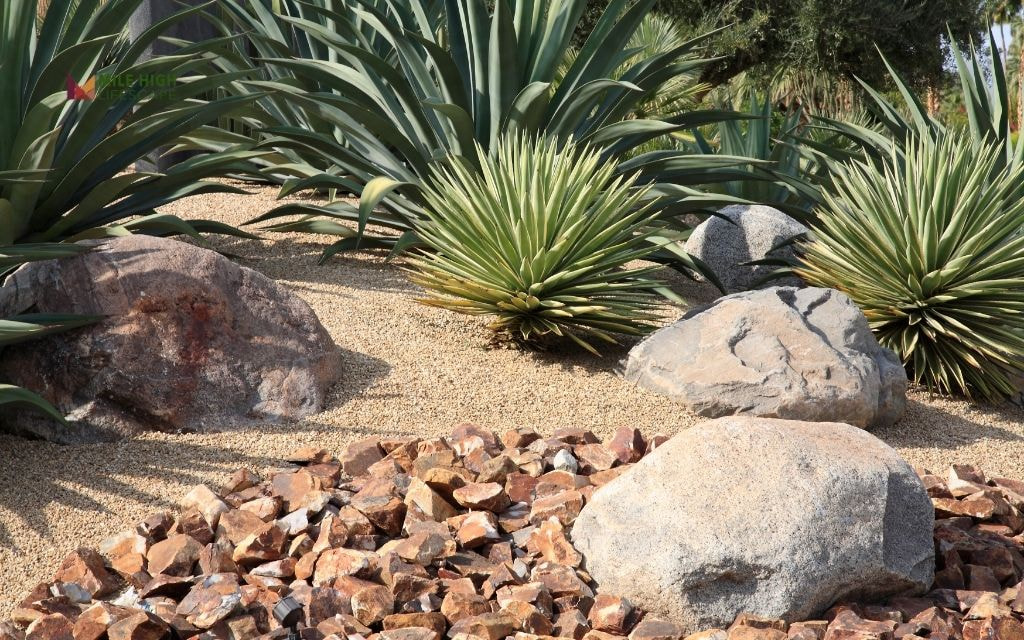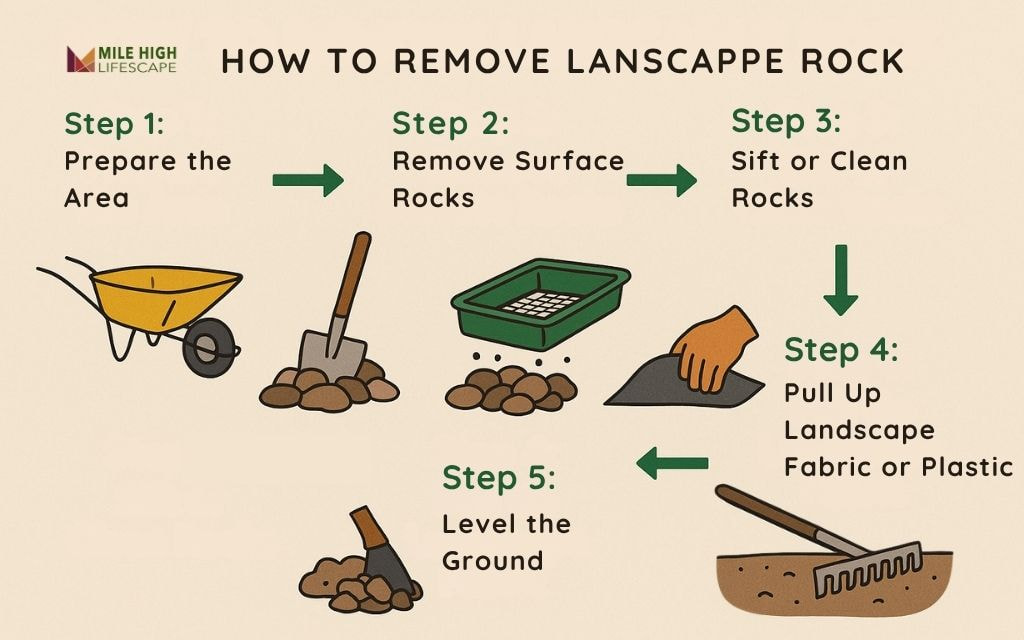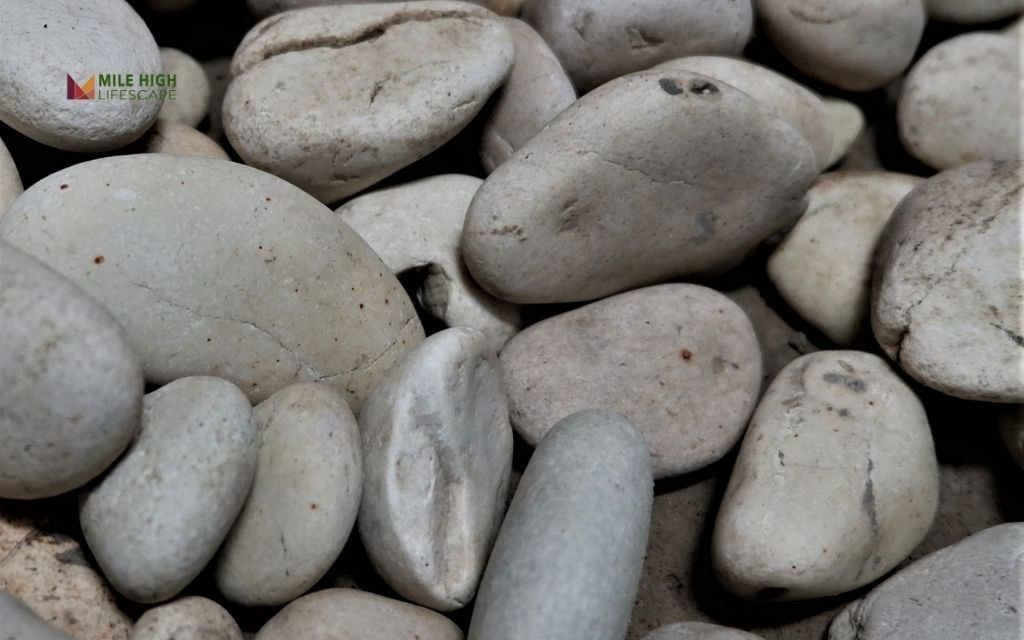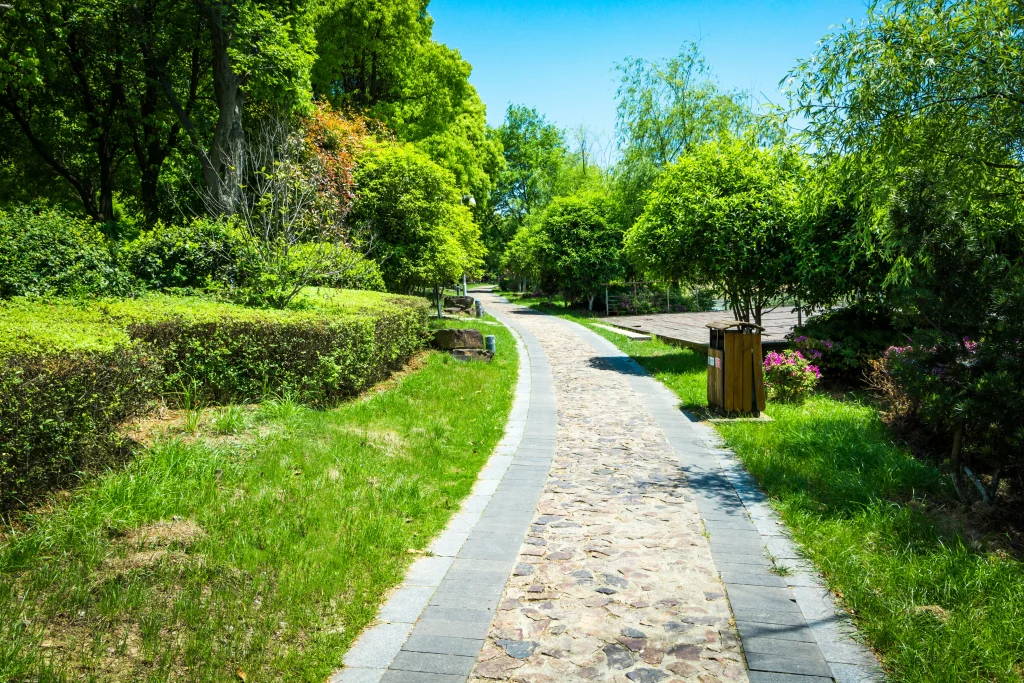“How to remove landscaping rocks?” Landscape rock removal can be done using a combination of tools and equipment like a wheelbarrow or even a mini excavator for larger areas. The approach depends on your project scope (yard size, rock type,…) and future plans.
Denver residents remove landscape rocks for three primary reasons.
- They redesign spaces to incorporate native plants that thrive in Colorado’s climate.
- They convert existing rock beds to functional lawn or garden areas for family activities.
- They address aged and degraded rock installations where weeds have overtaken the original design intent.
This guide walks you through safe, effective DIY methods for removing landscape materials.
You’ll discover proper tool selection, understand disposal options, learn project costs, and recognize when professional help delivers better value for your specific situation.
Should You Remove Your Landscape Rock?
Aging landscape materials signal the need for change. Rocks that once looked crisp now harbor weeds and debris. Faded colors and scattered stones create an unkempt appearance that reduces curb appeal.
More Denver homeowners shift from lava rock and gravel installations to plant-based landscapes. These organic designs offer better water management and seasonal interest.
Property resale considerations drive many removal decisions. Buyers often prefer established gardens over rock-dominated yards. HOA requirements may also mandate certain landscape standards that rock beds cannot meet.

Choosing the Right Tools for Landscape Rock Removal
Match your tools to yard size, rock type, and depth. Small projects need basic hand tools. Large installations require power equipment or professional machinery.
Essential Tools for Rock Removal:
- A flat shovel handles shallow installations and small rocks efficiently.
- Hard rakes loosen embedded stones and scrape rock beds clean.
- Wheelbarrows transport heavy loads without straining your back.
- Soil sifter screens separate reusable rocks from dirt and debris.
- Tarps and buckets stage materials for easy hauling.
- Heavy-duty gloves protect hands during extended work sessions.
Large projects benefit from rental equipment. Skid steer loaders handle rock beds over 500 square feet. These machines complete in hours what hand tools accomplish in days.
Local tool libraries and rental centers in Denver offer weekend rates for heavier equipment. Reserve machinery in advance during peak landscaping seasons.
How to Remove Landscape Rock: Step-by-Step DIY Guide
Step 1: Prepare the Area
Start by clearing all obstacles from your work zone. Remove patio furniture, planters, and decorative items that might interfere with rock removal. Take photos of your current landscape before beginning work to reference plant locations or irrigation system layouts later.
Walk through the area and identify irrigation lines using flags or spray paint. Look for sprinkler heads, drip irrigation tubing, and main water lines that run beneath the rock bed. Mark these locations clearly to prevent accidental damage during removal. Contact your irrigation company if you cannot locate all system components.
Check for utility lines by calling 811 at least two business days before starting work. Gas, electric, and cable lines sometimes run through landscape beds. Professional marking services provide this safety check at no cost to homeowners.
Step 2: Remove Surface Rocks
Begin with surface rocks using a hard rake to loosen materials. Pull rocks toward yourself rather than pushing them away for better control and less back strain. Work from one corner to create clear pathways for wheelbarrow access.
Use a flat shovel for embedded stones that resist rake removal. Insert the shovel blade beneath rocks at a shallow angle to pop them free from surrounding soil. Avoid aggressive chopping motions that can damage underground irrigation components or create unnecessary soil disturbance.
Load rocks directly into wheelbarrows or onto tarps for transport. Fill containers to comfortable lifting weights rather than maximum capacity. Most people handle 50-75 pounds per load without excessive strain. Make multiple trips to maintain safe working conditions.
Sort materials as you work when planning to reuse rocks. Separate quality stones from broken pieces and soil-contaminated materials. Clean rocks command better resale prices and work better for future landscape projects.
Step 3: Sift or Clean Rocks (Optional)
Set up screening equipment using hardware cloth or commercial soil sifters. Choose mesh sizes based on your smallest rocks to retain valuable materials while removing dirt and debris. The quarter-inch screen works well for most landscape rock applications.
Work in small batches to maintain efficiency and prevent material buildup. Shake screens gently to separate soil without damaging rocks. Use garden hoses to rinse stubborn dirt from valuable stones when planning reuse or resale.
Create separate piles for different rock grades and sizes. Group similar materials together for easier handling during disposal or relocation. Label piles clearly if working over multiple days to maintain organization.
Consider soil disposal separately from rock removal. Contaminated soil may require special handling depending on your area’s environmental regulations. Clean soil can often be reused for garden bed amendments or lawn repair projects.

Step 4: Pull Up Landscape Fabric or Plastic
Locate fabric edges by feeling along rock bed perimeters or looking for visible material borders. Most installations extend slightly beyond rock coverage areas. Start removal from corners or edges where fabric typically overlaps.
Cut degraded fabric into manageable sections using utility knives or heavy scissors. Old landscape fabric often tears during removal, making large piece extraction difficult. Work systematically to prevent leaving fabric remnants in the soil.
Check fabric condition as you remove each section. Intact materials in good condition can be reused for future landscape projects or other properties. Dispose of torn, brittle, or chemically degraded fabric according to local waste management guidelines.
Remove all staples, pins, and securing hardware completely. These metal pieces create safety hazards and interfere with future planting or lawn installation. Use pliers or pry bars to extract stubborn fasteners embedded in hard soil.
Step 5: Level the Ground
Smooth exposed soil using garden rakes to eliminate high and low spots created during rock removal. Work soil when moisture content allows easy manipulation without creating hard clods or muddy conditions.
Fill depressions with quality topsoil or compost amendments when planning garden installations. Avoid using excavated soil that may contain fabric remnants or poor-quality fill materials.
Test soil drainage by digging small test holes and observing water infiltration rates.
Grade surfaces to promote proper water drainage away from structures and toward appropriate outlets. Maintain gentle slopes of one to two percent to prevent water pooling while avoiding erosion problems during heavy Denver rainfall events.
Add soil amendments based on your next landscape phase. Garden beds benefit from compost or aged manure incorporation. Lawn areas may require different soil preparations depending on seed or sod installation requirements.
Easiest Way to Remove Large Quantities of Rock
Rock Vacuum Systems
Rock vacuums handle loose materials quickly and efficiently. These specialized machines suction rocks directly into collection containers, eliminating manual loading and transport. Rental companies in Denver offer daily and weekly rates for homeowner projects.
Skid Steer Loaders
Skid steer equipment moves tons of stone in hours rather than days. These compact machines navigate residential yards while providing substantial lifting capacity. Experienced operators can complete large removals with minimal landscape disruption.
Mini Excavators
Mini excavators excel at removing deeply embedded rock installations. Their precision digging capabilities separate rocks from soil while preserving surrounding landscape features. Rental packages typically include operator training or professional service options.
Professional Landscape Removal Teams
Landscape contractors offer complete removal solutions for whole-yard conversions. Professional teams provide specialized equipment, experienced operators, and proper disposal services in single packages. This approach works best for major redesign projects or time-sensitive renovations.

How to Dispose of Landscape Rock in Denver
Step 1: Assess Your Rock Quality and Quantity
Clean and sort your removed rocks by size and condition. Separate high-quality stones from broken or soil-contaminated materials. Measure or estimate total volume to determine the best disposal method for your quantity.
Step 2: Consider On-Site Reuse First
Plan creative reuse projects before disposal. Use quality rocks for garden pathways, decorative borders, or dry creek beds. Create drainage areas around downspouts or low-lying sections of your property. This option eliminates disposal costs entirely.
Step 3: Sell or Give Away Quality Materials
Post clean rocks on online marketplaces like Craigslist, Nextdoor, or Facebook Marketplace. Include photos and accurate measurements in your listings. Price rocks competitively based on local market rates, typically $20-50 per cubic yard for quality materials.
Step 4: Clean Rocks for Recycling
Remove all landscape fabric, soil, and organic debris from rocks destined for recycling centers. Use garden hoses or pressure washers to clean materials thoroughly. Contaminated loads face rejection or additional processing fees at recycling facilities.
Step 5: Transport to Recycling Centers
Contact facilities like Arvada Recycling or local rock yards to confirm acceptance policies and hours. Load clean rocks into pickup trucks or trailers for transport. Weigh loaded vehicles if facilities charge by tonnage rather than volume.
Step 6: Rent Dumpster for Mixed Debris
Order appropriate dumpster sizes for projects with mixed landscape waste. Combine rocks with other materials like old plants, fabric, and soil to maximize container value. Check weight limits carefully, as rocks add substantial weight quickly.
Safety Considerations for Landscape Rock Removal
Protective gear prevents common injuries during rock removal projects:
- Heavy-duty gloves provide essential grip and hand protection.
- Steel-toe boots shield feet from dropped stones. Safety glasses block dust and debris.
- Dust masks reduce respiratory irritation from dry materials. Use N95 or better filtration for extended exposure periods.
Proper lifting technique protects your back during repetitive tasks. Bend your knees when picking up rocks. Avoid twisting motions while carrying heavy buckets. Take regular breaks to prevent muscle fatigue.
Call 811 before digging to locate buried utilities. Gas, electric, and water lines may run beneath landscape beds. Accurate marking prevents costly damage and safety hazards.
Conclusion
How to remove landscape rock successfully requires planning, proper tools, and realistic timeline expectations. Whether you choose DIY methods or professional services, removing outdated materials creates opportunities for landscape improvement.
The best way to remove rock landscaping depends on your specific situation. Small projects work well as weekend DIY tasks. Large installations benefit from professional equipment and expertise.
Rock removal represents the first step toward yard revitalization. You’ll reclaim space for gardens, improve drainage patterns, and increase property value through thoughtful redesign.
If you need help with landscape rock installation or removal, contact us today! Our experienced team delivers quality results that exceed expectations, giving you the chance to enjoy your beautiful landscape rocks.
Frequently Asked Questions (FAQs)
Can I reuse rock I remove from one part of the yard?
Yes, clean landscape rocks work well for drainage projects, pathways, and decorative borders. Screen out soil and debris before reusing materials. Quality stones maintain value for future landscape applications.
Who removes rocks from a yard?
Landscape contractors, excavation companies, and specialized removal services handle rock removal projects. DIY removal works for small areas. Professional services provide equipment and disposal for larger installations.
Will a landscape rake remove rocks?
Landscape rakes handle surface rocks and loose materials effectively. They cannot remove embedded stones or deep installations. Combine raking with shoveling for complete removal of mixed materials.
Can I recycle old lava rock in Denver?
Yes, several Denver-area facilities accept clean lava rock for recycling. Remove all fabric, soil, and organic matter before transport. Contact recycling centers for current acceptance policies and drop-off procedures.
Do I need a permit or inspection to remove landscaping rock?
Generally, no permits are required for landscape rock removal in Denver. However, check HOA requirements and city codes for your specific area. Large excavation projects may require utility marking and inspection.
